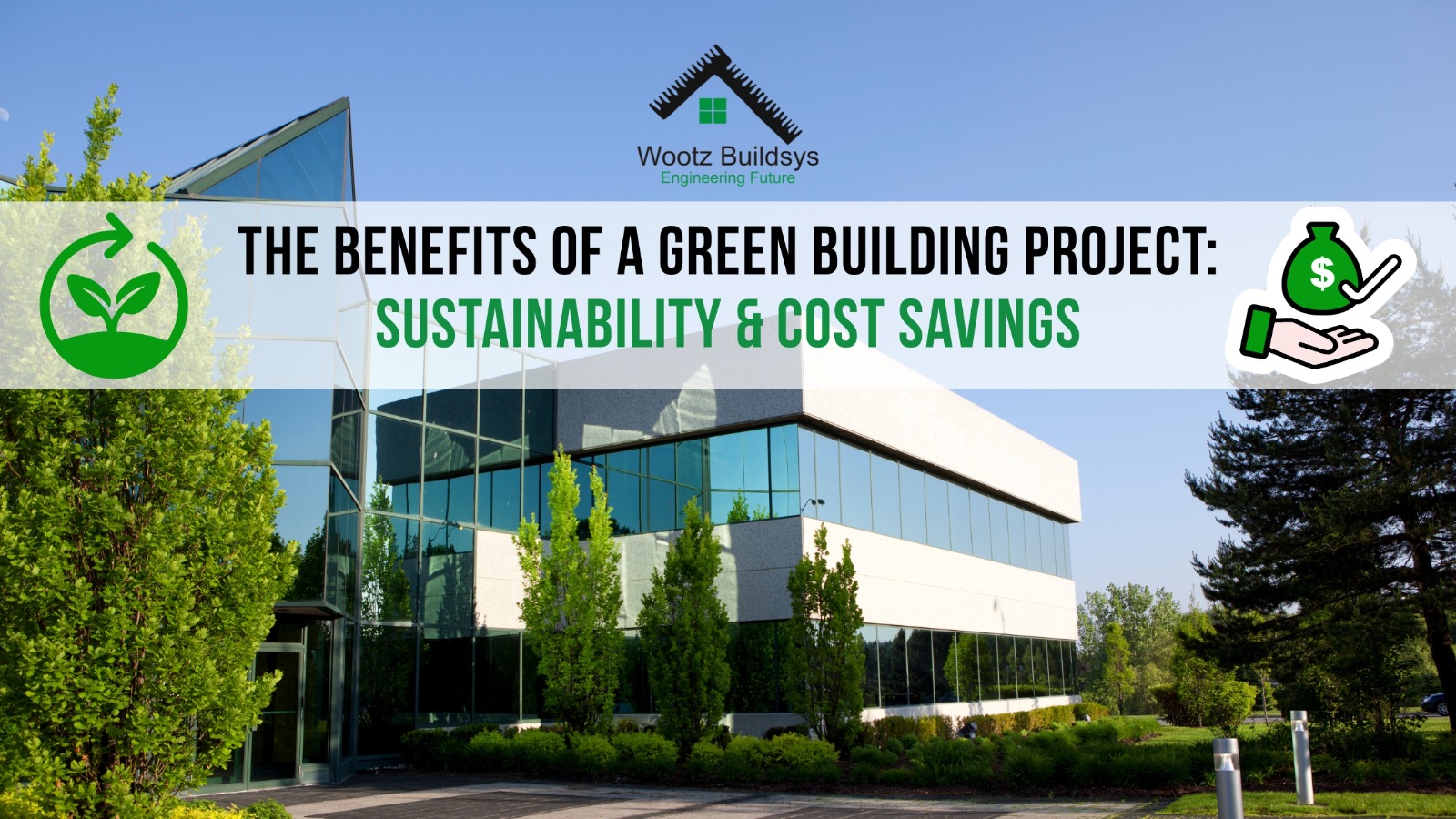
With increasing concerns about climate change and rising energy costs, green building projects have emerged as a sustainable and cost-effective solution for the construction industry. These projects focus on energy efficiency, reduced environmental impact, and the use of eco-friendly materials. Whether for residential, commercial, or industrial purposes, a green building project offers long-term benefits by lowering operational costs, improving indoor air quality, and conserving natural resources.
In this blog, we will explore the key benefits of a green building project, highlighting its role in sustainability and cost savings.
1. Energy Efficiency and Reduced Utility Costs
One of the biggest advantages of a green building project is energy efficiency. By incorporating smart design, energy-efficient appliances, and renewable energy sources, these buildings significantly reduce electricity consumption.
How Green Buildings Save Energy:
- Solar Panels & Renewable Energy: Many green buildings integrate solar panels or wind energy to reduce dependency on fossil fuels.
- LED Lighting & Energy-Efficient Appliances: These use less electricity compared to traditional systems.
- Smart HVAC Systems: Automated heating, ventilation, and air conditioning (HVAC) systems optimize temperature control, reducing energy waste.
- Improved Insulation: High-quality insulation helps maintain indoor temperatures, lowering heating and cooling costs.
Cost Savings: A well-designed green building project can reduce energy bills by up to 30-50% compared to conventional buildings.
2. Water Conservation and Lower Water Bills
Water scarcity is a growing global concern, making water conservation a critical aspect of green building projects. These buildings use innovative water-saving techniques to minimize wastage.
Water-Saving Features:
- Low-Flow Fixtures & Toilets: Reduce water usage without compromising performance.
- Rainwater Harvesting Systems: Collect and store rainwater for irrigation and other uses.
- Greywater Recycling: Treats wastewater from sinks and showers for reuse in landscaping and flushing.
- Smart Irrigation Systems: Use sensors to optimize water usage for gardens and green spaces.
Cost Savings: Water-efficient designs can cut water bills by up to 40%, making green building projects a financially smart choice.
3. Sustainable Materials and Reduced Waste
A green building project prioritizes the use of eco-friendly, sustainable materials that have a lower environmental impact. These materials reduce waste and promote recycling.
Sustainable Building Materials Include:
- Recycled Steel & Bamboo: Durable, renewable alternatives to traditional materials.
- Low-VOC Paints & Finishes: Reduce air pollution and improve indoor air quality.
- Reclaimed Wood & Recycled Concrete: Help reduce deforestation and construction waste.
- Eco-Friendly Insulation: Made from recycled cotton, wool, or cellulose instead of harmful fiberglass.
Environmental Benefit: Using sustainable materials can reduce a building’s carbon footprint by 20-30%.
4. Healthier Indoor Environment and Improved Well-Being
A green building project not only benefits the environment but also enhances indoor air quality, leading to healthier living and working spaces.
Health Benefits of Green Buildings:
- Better Ventilation: Reduces indoor air pollutants and prevents mold growth.
- Non-Toxic Materials: Green buildings use materials free from harmful chemicals like formaldehyde and volatile organic compounds (VOCs).
- Natural Lighting & Biophilic Design: Maximizes daylight exposure, reducing eye strain and improving productivity.
Impact on Occupants: Studies show that people living or working in green buildings experience fewer health issues like respiratory problems and fatigue.
5. Higher Property Value and Market Demand
As sustainability becomes a key factor in real estate, green buildings tend to have higher resale values and attract more buyers and tenants.
Why Green Buildings Have Better Market Value:
- Energy Savings Attract Buyers: Lower utility bills make green buildings more appealing.
- Government Incentives & Certifications: Many countries offer tax benefits for eco-friendly constructions.
- Growing Demand for Sustainability: Businesses and homeowners prefer energy-efficient properties.
Financial Benefit: A green building project can increase property value by 7-10% compared to traditional buildings.
6. Reduced Carbon Footprint and Environmental Impact
A green building project plays a crucial role in reducing environmental damage by lowering carbon emissions and minimizing waste production.
How Green Buildings Reduce Carbon Footprint:
- Energy Efficiency: Lower fossil fuel consumption means fewer carbon emissions.
- Sustainable Materials: Reduce deforestation and pollution.
- Smart Waste Management: Encourages recycling and composting.
- Green Roofs & Vertical Gardens: Improve air quality and reduce urban heat effects.
Sustainability Impact: Green buildings reduce CO₂ emissions by 30-40%, contributing to a cleaner planet.
Conclusion
A green building project is more than just an eco-friendly trend—it’s a smart investment for sustainability and long-term cost savings. By incorporating energy-efficient designs, water conservation methods, and sustainable materials, green buildings reduce environmental impact while offering financial benefits. As demand for sustainable buildings grows, investing in a green building project ensures a healthier future for both people and the planet.
If you’re planning a green building project, now is the time to embrace sustainability and enjoy the rewards of lower operational costs, healthier living spaces, and a greener world.
Frequently Asked Questions (FAQ’s)
1. What is a green building project?
A green building project focuses on eco-friendly construction methods that reduce environmental impact, improve energy efficiency, and promote sustainability.
2. How much can I save with a green building?
Green buildings can reduce energy costs by 30-50% and water bills by 40%, leading to significant long-term savings.
3. Are green building materials more expensive?
Initially, some materials may cost more, but the long-term savings in energy, water, and maintenance make green buildings more cost-effective.
4. Do green buildings qualify for government incentives?
Yes, many countries offer tax credits, grants, and rebates for green building projects to promote sustainable construction.
monperatoto monperatoto toto slot slot gacor rtp slot toto slot slot gacor kampungbet kampungbet kampungbet kampungbet kampungbet monperatoto monperatoto kampungbet kampungbet kampungbet monperatoto situs slot gacor situs togel toto togel jacktoto togel online toto togel situs toto jacktoto jacktoto situs toto slot gacor jacktoto jacktoto slot online


